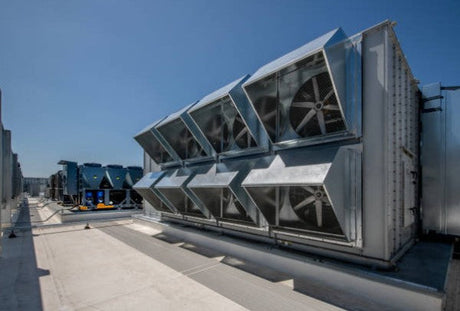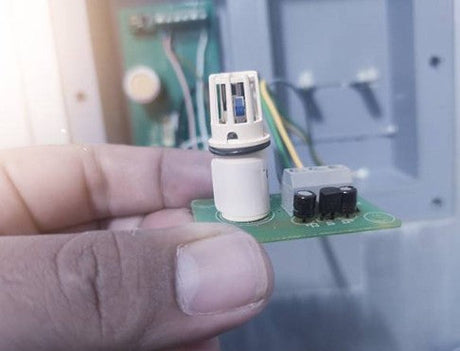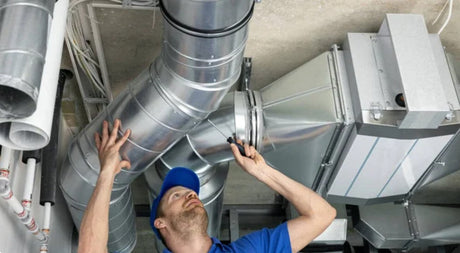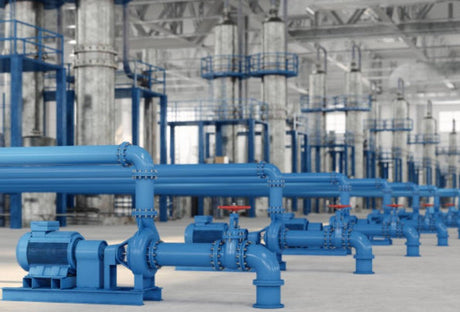Play in industrial environments Different pressure sensors A crucial role in monitoring and controlling processes. These precision instruments ensure that working conditions, security standards and ensure the quality of Products. However, even without adequate maintenance, even the most robust sensors can lose their performance and fail early. In this guide we give you valuable maintenance tips with which you can optimize the performance and lifespan of your differential pressure sensors.
One of the most fundamental methods to ensure the performance and longevity of differential pressure sensors in industrialized sensors lies in the implementation of regular inspections. The checks are essential to identify problems at an early stage and prevent larger failures. Inspections offer you the opportunity to monitor the functionality of your sensors and ensure that you work within the specifications required for your processes.
All inspections should be documented carefully in order to enable a traceability and to contribute to the constant optimization of the maintenance intervals. The documentation can also help to recognize trends and predict when maintenance will be necessary instead of relying on reactive measures.
By observing these aspects and the establishment of robust test routines, you can increase operational safety, avoid unexpected failures and effectively extend the life of your differential pressure sensors - a profit for the reliability and efficiency of any industrial application.
Optimal test intervals of differential pressure sensors
There is no lump sum to the optimal test intervals for differential pressure sensors, since these depend on several factors such as the purpose and the environmental conditions. A common approach is to determine test intervals based on the manufacturer's recommendations, the experience in the respective area of application and, if necessary, the legal regulations.
In many cases, a half -year to annual inspection is appropriate, but this can vary depending on the area of application and in some critical applications, shorter intervals can also be recommended. The operating history of the sensor should be analyzed for a precise determination of the test intervals. This includes the recording and evaluation of performance data and the recognition of patterns that could indicate a deterioration in the sensor performance.
Process for checking and cleaning differential pressure sensors
During inspection, the differential pressure sensors should not only be checked for their functionality, but also for signs of physical damage such as cracks or corrosion. It is also important to check the sensor connections for fixed seat and freedom of corrosion, as they can affect measuring accuracy.
Regular, careful cleaning of the sensors prevents constipation and measurement errors. Proceed as follows:
- Security first: Before you start cleaning, make sure that the sensor is deactivated and separated from the power supply in order to avoid any risk of accidents. Note all safety precautions in accordance with the manufacturer's information and your internal security guidelines.
- External cleaning: First remove coarse dirt and dust with a soft, dry cloth or a special brush. Do not use hard brushes or tools that could damage the surface of the sensor.
- Gentle cleaning agent: In the event of stronger pollution, you can use mild cleaning agents. Make sure to avoid solvent -containing or aggressive chemicals that could attack plastic parts or seals.
- Fine cleaning: The fine cleaning of the pressure connections and measuring channels requires special caution. Sometimes compressed air is enough to remove dust and small particles. It is essential that no water or other cleaning agents penetrate the pressure connections, as this can lead to internal damage.
- Exchange of the hose connections: Hose connections on differential pressure sensors can be easily replaced. In most cases, complex cleaning is not economical.
- Drying: After cleaning, it is important to let the sensor dry completely before it is put back into operation. Moisture can cause corrosion and electrical malfunctions.
- Examination and calibration: After the sensor is clean and dry again, a functional test should be carried out. Check whether the measured values have changed and whether renewed calibration is required.
Calibration of differential pressure sensors ensures accuracy
During the calibration process, a sensor is compared with a known pressure standard in order to identify and correct any deviations in its measurements. This step is critical because even the smallest measurements can lead to product quality problems, security risks or inefficient processes.
For the differential pressure sensors of the Seickom Electronic offered PTH series applies:
- When calibration, make sure that the sensor is in a pressure -free state.
- To do this, disconnect the two air hoses from the device.
- To be on the safe side, each calibration only takes place with ± 5 pa.
calibration: With calibration menu 1 (Cal1), calibrate. Confirm with Yes.
Reset to the factory setting: With calibration menu 2 (CAL2), PTH reset to the factory setting. Confirm with Yes.
A proactive maintenance strategy not only prevents disorders in the operating process, but also maximizes the lifespan of your differential pressure sensors. Integrate these maintenance tips into your regular maintenance procedures to ensure the best possible performance of your valuable sensors.






